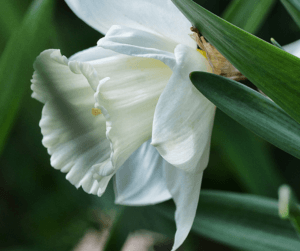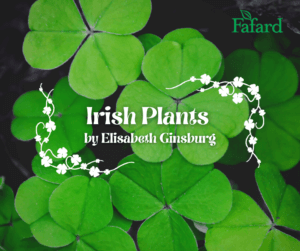
St. Patrick’s Day falls every year on March 17. In some places spring has already sprung by mid-March, in others it is still weeks away. But regardless of how green your garden is on March 17, the whole world will turn green—at least temporarily–in celebration of all things Irish.
It is a good time to think of plants with Irish associations that might make good additions to your beds, borders, containers and window boxes. Some, like shamrocks come to mind immediately, but others like common foxglove (Digitalis purpurea) have equal claim to Irish origins. As you plan for spring planting, think about adding a little Irish magic.
Shamrocks: What’s in a Name?
Around St. Patrick’s Day, large and small merchandisers sell pots of “shamrocks” with either green or purple leaves. They are lovely and decorative, but they are not Irish. Usually the little plants are species and varieties of oxalis, a plant that originated in Central and South America.
For real shamrocks, you need to lay hands on either white clover (Trifolium repens) or yellow clover (Trifolium dubium), both of which are native to Ireland.
White clover, as many gardeners will attest, grows readily in gardens, lawns and many other situations. Some consider it a weed, but it also makes an excellent ground cover. If you fear that your clover will overwhelm better-mannered garden plants, grow it in a pot. Clover loves full sun, good soil and consistent moisture, but will prevail even in less optimal conditions. The plants pull their weight in the garden by fixing nitrogen in the soil and attracting pollinators.
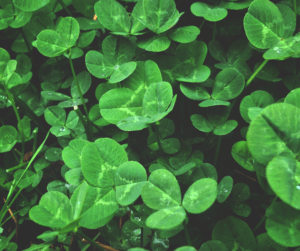
Fairy Thimbles
Whether you call these beautiful plants “foxglove” or “fairy thimbles”, they are Irish natives. Resistant to critters but attractive to humans and pollinators, foxglove can thrive in partial shade with consistent moisture, producing statuesque spires that rise between two and five feet.
The plants, which are also native to other parts of western, southern and central Europe, are biennial, meaning that when grown from seed they form a basal rosette of leaves the first year and flower the second year. Happy foxgloves are also prolific self-seeders. If you do not remove all the spent flower stalks when they finish their late spring bloom period, foxgloves will make themselves effectively perennial by producing numerous offspring. Flower colors in the species are usually shades of purple, pink or white. Pollinators adore them and it is fun to watch fuzzy bumblebees crawling into the tubular blooms.
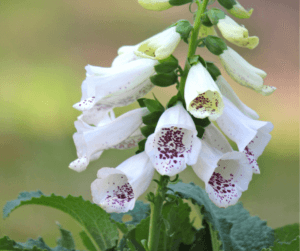
Moss of the Irish
Great as a ground cover, rock garden subject, or moss garden component, Irish moss (Sagina subulata) is truly Irish, but not a true moss. Instead it is a low-growing evergreen member of the carnation family. Topping out at about two inches tall, it grows slowly, eventually spreading to about twelve inches. The plants are relatively easy-going, but benefit from the addition of a good soil amendment like Fafard® Premium Natural & Organic Compost at planting time. Irish moss thrives in a variety of conditions, but sulks in hot, dry weather, which will cause it to turn brown. Supplemental water is a must, especially in drought periods. Browning may also happen in the winter, but plants will generally rebound with new growth when spring arrives.
Though not prized for its flowers, Irish moss does produce small white blooms in late spring or early summer. This is especially nice for containerized plants, which should be grown in wide, shallow vessels. Depending on climate and site, containers may need winter protection.
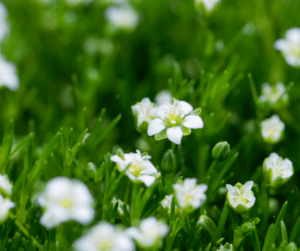
Some Like it Wet
Native to both northern North America and northern Europe, including Ireland, bog rosemary (Andromeda polifolia) is unrelated to culinary rosemary, but bears narrow, blue-green leaves that are reminiscent of the herb. That foliage is evergreen and borne on small, shrubby plants. Like other members of the Ericaceae or heath family, including blueberries, bog rosemary is eminently ornamental. In May lovely, small, bell-shaped flowers appear clad in white, edged in pink clustering in umbels of up to eight blooms. The plants grow as tall as two feet, with a spread of up to three feet.
True to its name and heritage, bog rosemary prefers acidic soil and wet, cool conditions, like those found in Irish peat bogs. It can be grown equally well in-ground or in containers. Dry summers and dry soil are the enemies, but under the right conditions, bog rosemary is highly decorative along paths or towards the front of borders. Unlike its herbal namesake, all parts are poisonous.
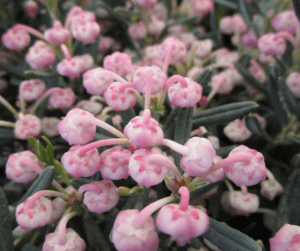
‘Empress of Ireland’ and More
Only one species of narcissus or daffodil is native to the British Isles, but a good number of daffodils were bred there. Ireland was home to some of the best, because of breeder Guy Wilson, who created, among many lovely varieties, including the eponymous, white-flowered ‘Empress of Ireland’.
Born in County Antrim, Northern Ireland, Wilson, the son of a manufacturer, produced his first crop of blooming seedlings in 1912, when he was twenty-seven. Specializing in white flowers, he went on to introduce 78 white-flowered daffodils with names like ‘Broughshane’ (in honor of his hometown), ‘Cantatrice” and ‘Rose of May’. A number of Wilson’s plants are still available from specialty merchandisers, and might even bloom on or close to St. Patrick’s Day.
